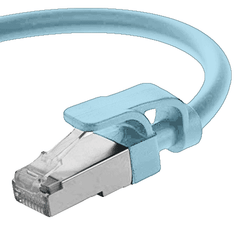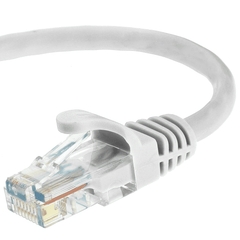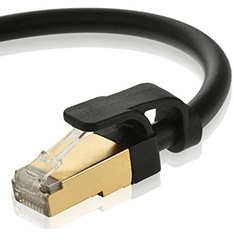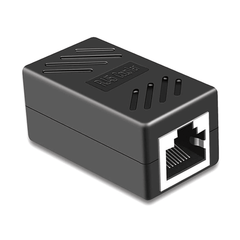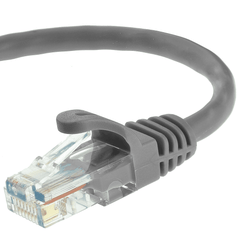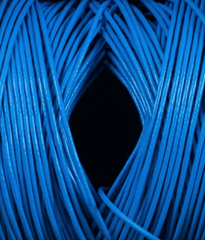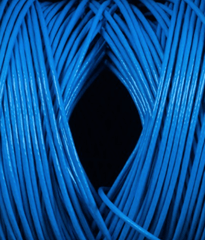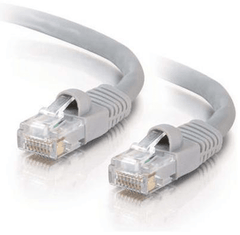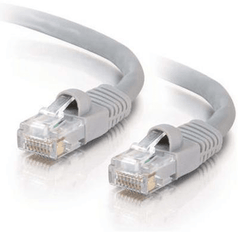Ethernet Cables (CAT) Category 5, 6, 7, 8.
Category (Cat) Ethernet Cables Listed Below Following The Cable Types 5, 6, 7, 8 Explanations.
While the idea of Category (Cat) Cables was originally introduced by the Electronic Industries Alliance (EIA), it is now managed by the Telecommunication Industry Association (TIA).
The TIA/EIA-568-A standard was released in 1991. Specifically, the standard clarified elements of fiber optic cabling, twisted pair cabling, coaxial cabling, in addition to their related connectors.
The TIA/EIA-568-A standard has now been revised to TIA/EIA-568-C in order to clarify standards for telecommunications installations.
Let us specifically discuss the Unshielded Twisted Pair (UTP) range of Cat cables.
Everyone in the IT or A/V industry will have heard of Cat5e and Cat6 cables. As you may know, Cat is short for "Category", which refers to varying levels of performance in attenuation, bandwidth, and crosstalk, and is related to the design of each cable.
Category 1 Cables:
Because of its constricted bandwidth, Cat 1 cables are not capable of carrying data.
Cat1 cables were once found in almost every home and office and were the most common telecommunications cables. Cat-1 cables were capable of up to 1MHz bandwidth.
Category 1 cables were designed for "plain old telephone systems" (POTS) and are a 2-pair copper UTP.
Category 2 Cables:
Then came Category 2 cables, which doubled the conductor count to 4 twisted pairs. Bandwidth was hugely increased to 4Mbps, which was perfect for fax and teletype communications. It should be pointed out here that both Cat1 and Cat2 are simply name variations for Level 1 and Level 2 cables, which were initially established by Anixter Internationals, a low voltage distribution company. Neither Cat-1 nor Cat-2 cables are identified in the TIA 568-C standard.
Category 3 Cables:
Category 3 cabling, otherwise known as "station wire" or Cat3, is an unshielded twisted pair cable specifically developed to carry data up to 10Mbps. Cat-3 cables were originally used for computer networking in the early 1990's, specifically in a system referred to as "Token Ring". Cat 3 is still used as telephone wiring and is defined in the TIA 568-C standard.
Category 4 Cables:
As an improvement on Cat3, Category 4 cabling offered up to 16 Mbps of bandwidth. Cat4 cables were typically used in early 10Base-T and Token Ring networks. Cat 4 cabling is no longer identified in TIA 568-C.
Category 5 Cables:
Category 5 cables (TIA-568-5) are the most widely used UTP networking cables available today.
While Cat5e cables (TIA-568-5e), also known as Category 5 enhanced cables, deliver the same 100 MHz bandwidth as the original Cat5, they offer better crosstalk capabilities.
While Cat5e cabling is used for many telephone and A/V applications, it is also used in structured cabling for computer networks like 1000Base-T (Gigabit Ethernet), 100Base-TX (Fast Ethernet), and 10Base-T.
Category 6 Cables:
Category 6, or Cat6 cable (TIA-568-6) is a standardized cable used for Gigabit Ethernet and other network physical layers. Cat 6 cables are backward compatible with Category 3 and Category 5/5e cable standards. Cat-6 provides up to 250 MHz bandwidth and has higher specifications for both system noise and crosstalk.
Cat6 cable is typically used in 10GBase-T (10-Gigabit Ethernet) and 1000Base-T (Gigabit Ethernet). It is also widely used in digital video applications, like HDBaseT.
Cat6a offers up to 500MHz bandwidth and is an "augmented" Category 6 cable.
Category 7 Cables:
TIA-568 Category 7 cables (TIA-568-7) are the latest cables also know as Cat7 that build upon earlier version Cat6 with ability to transmit data at higher speeds. ISO/IEC (International Standards Organization/ International Electrotechnical Commission) European standard (ISO/IEC 11801) defines a Class F augmented standard (Cat7a) for up to 1000 MHz bandwidth, and a Class F cable (Cat-7) with 600 MHz bandwidth.
There's currently no such thing as a TIA-568 Category 8 cable (TIA-568-8). While the ISO/IEC (International Standards Organization/ International Electrotechnical Commission) European standard (ISO/IEC 11801) defines a Class 8 standard for up to 2000 MHz bandwidth. It is currently not recognized by TIA. It is understood that this high standard will soon be recognized by TIA in the future.


